Integrated circuits (ICs) are synonymous with electronics. Wherever there are any electronics, there are definitely one or more ICs. There are no electronics without ICs. Electronics became so popular, widely acceptable, and ubiquitously applicable, all due to the invention of integrated circuits. Integrated circuits are miniaturized integration of complete electronic circuits on a single semiconductor chip. ICs are fabricated through rigorous and complex manufacturing processes. That is why, ICs are highly reliable, suitable for large-scale production, have large circuits in extremely small footprints, consume less power, and can be operated at high frequency and speed.
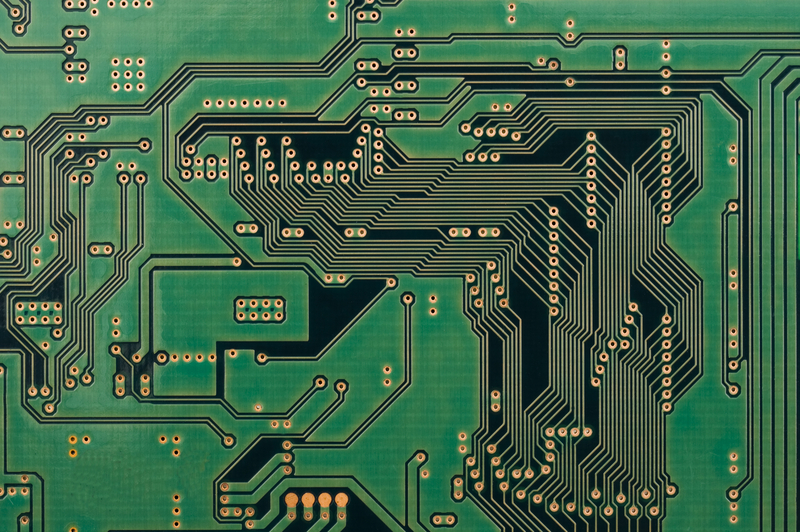 What is an integrated circuit?
What is an integrated circuit?
The idea of integrated circuits was first contemplated when transistors were invented. Conventionally, electronic circuits were produced by assembling different discrete components and interconnecting them on a prototyping or printed circuit board. With the introduction of transistors, semiconductor technology took an all-together leap, and researchers started finding ways to get not just transistors but complete electronic circuits on a single silicon wafer. This was just a beginning.
The number of transistors and other electronic components that can be fabricated and interconnected on a single silicon wafer started increasing rapidly, almost doubling every two years. This is popularly known as Moore’s Law. Since 1965, when Moore’s law was predicted, it is still applicable today in 2021. At present, integrated circuits are microscopic or nano- circuits integrated on a single semiconductor chip. The heart of any IC is a die, on which, a complete functional large-scale electronic circuit is fabricated. Connections are brought outside this microscopic circuit sitting over a compact die as part of the IC packaging.
Unlike discrete circuits, the components once fabricated in an IC cannot be disassembled or replaced. The circuit remains integrated as a single unit and cannot be modified. That is why these microscopic circuits on tiny dice are called integrated circuits.
Types of integrated circuits
Integrated circuits are a complex form of electronics. They come in a wide range of characteristics, packaging, applications, and complexities. Still, it is possible to somehow classify various integrated circuits on the basis of some broad classification factors.
Any integrated circuit is basically a miniaturization of an integrated electronic circuit. Therefore, to what scale the miniaturization is achieved is one criterion to classify IC chips. This is determined by how many transistors or logic gates are integrated in a single IC. On the basis of chip size, integrated circuits are classified as follow –
- Small scale integration
- Medium scale integration
- Large scale integration
- Very large scale integration
- Ultra large scale integration
Another factor by which, ICs are classified is by the type of their circuitry. After all, electronics is all about signals. On the basis of signal type, integrated circuits are classified as follow –
- Digital integrated circuits
- Analog integrated circuits
- Mixed-signal integrated circuits
A third way to classify ICs is by their manufacturing technique. On this basis, integrated circuits are classified as follow –
- Thin and thick film ICs
- Monolithic ICs
- Hybrid/Multichip ICs
Classification of ICs on the basis of chip size
The integration scale has always been the inspiration and aspiration of the semiconductor industry. The integration scale denotes the number of transistors or gates integrated on a single chip. On this basis, integrated circuits are of the following type:
Small scale integration – In the beginning of IC technology from 1961-1965, ICs had only a few components integrated on a chip, typically 2 to 10 transistors. At present, integrated circuits having 10 to 100 transistors on a single chip making around 3 to 30 gates on the chip are classified as small scale integration ICs. These ICs are used to make flip-flops and logic gate ICs.
Medium scale integration – The next higher level of IC integration is medium scale, in which, typically 100 to 1000 transistors making 30 to 300 logic gates per chip are fabricated on a single chip. Medium-scale integration technology was prominent between years 1966 and 1971. This technology is used to make multiplexers, decoders, counters, and registers.
Large scale integration – From 1971 to 1979, large scale integration (LSI) technology took over MSI technology. In large scale integration, thousands of transistors – typically 1000 to 20,000 transistors resulting in 300 to 3000 gates per chip – are fabricated on a single chip. This technology is used to make RAM, ROM, and microprocessors.
Very large scale integration – From 1980 to 1984, very large scale integration (VLSI) was achieved. In VLSI technology, tens of thousands of transistors – typically 20,000 to 50,000 transistors making up 3000 gates per chip – are fabricated on a single die. This technology is used to design digital signal processors (DSP), RISC processors, 16-bit and 32-bit microprocessors and microcontrollers.
Ultra large scale integration – Post-1984 and till now, ultra large scale integration (ULSI) has been achieved. In ULSI technology, from 50,000 to billions of transistors are fabricated on a single chip. The ULSI technology is mainly used for designing 64-bit and higher microprocessors and controllers.
The future of the integration scale of ICs lies in nanotechnology. Moore’s Law is still valid despite rising costs of research and development. The semiconductor manufacturers are still, and may probably always look forward to achieving an even higher level of integration. The modern applications of electronics (artificial intelligence, machine learning, deep learning, cloud computing, IoT, AIoT, augmented reality, mixed reality, holographic reality, supercomputing, scientific computing, etc) are ever demanding in terms of memory as well as computing power. The semiconductor industry may never settle to a saturation point, and the level of integration, perhaps, never sees an end.
Classification on the basis of signal type –
Electronics is all about processing signals. Accordingly, all the electronic circuits, as well as integrated circuits too, are classified into the following types:
Analog/Linear ICs – These integrated circuits are designed to process continuous signals. In these ICs, the input and output have a linear relationship. These ICs are designed for applications like operational amplifiers, differential amplifiers, timers, sensors, voltage regulators, analog multipliers, phase-locked loops, modulators, demodulators, audio filters, etc. The basic building block of analog ICs is an operational amplifier.
Digital ICs – These integrated circuits are designed to process digital signals i.e. 0 or 1, HIGH or LOW, ON or OFF. These ICs have logical inputs, and output one or the other logical function. Digital ICs are the flagship products of the semiconductor industry. These ICs are designed for applications like flip-flops, logic gates, counters, registers, multiplexers, decoders, encoders, microprocessors, and microcontrollers.
Mixed-signal ICs – These integrated circuits are designed to process combinations of analog and digital signals. These are the most complex to design as both analog and digital circuits have different power requirements, signal levels, and functioning. These ICs are designed for applications like analog-to-digital conversion, digital-to-analog conversion, Ethernet, radio, and power management.
Classification on the basis of fabrication
IC technology is the core of electronics. The integrated circuits are made possible by various rigorous manufacturing processes. On the basis of manufacturing technique, integrated circuits are of the following type:
Thin and Thick Film ICs – In these types of integrated circuits, passive components are fabricated on-chip while transistors and diodes are connected as separate components to form a single complete electronic circuit. These ICs are basically a combination of integrated and discrete components in a single package offering a unified function. In thin film technology, the passive components like resistors and capacitors are fabricated on the IC by depositing a film of conducting material on a glass or ceramic substrate. By varying the thickness of the conducting material, passive electrical properties like resistivity and capacitance are controlled. In thick film technology, desired passive components are fabricated by depositing conducting material using silk printing technique on a ceramic substrate. In this technique, circuit connections are made by conductive or dielectric pastes, and a mesh of stainless steel wires is used as screens. After printing the circuit on a ceramic substrate, it is fired in a furnace at high temperatures to infuse the circuit on the die.
Monolithic ICs – In a monolithic IC, all passive, active and discrete components are fabricated on a single silicon crystal. These are the most common type of ICs used today. They are easy to produce and are highly reliable in operation. Though this is the most widely adopted IC manufacturing technique, it still faces a lot of practical challenges. Most notable of these challenges are poor insulation, limited power rating, and signal noise.
Hybrid/Multi-Chip ICs – In these types of ICs, more than one individual chip is interconnected in a single package. The active components like transistors and diodes and passive components like resistors and capacitors are diffused on the chip and interconnected using metallic connections. These ICs are mainly used for high-power applications (5W to 50W) or high-performance applications. The hybrid ICs are better in technology and design compared to monolithic ICs.
Conclusion
Integrated circuits are the core of electronics. In this article, we have only covered simple classifications of modern ICs. This covers just a small titbit of all-about IC technologies. IC design and manufacturing processes, both are endless topics. There is a lot more to know about ICs. The future of integrated circuits lies in nano-electronics. It is yet another vast and fascinating topic.
You may also like:
Filed Under: What Is

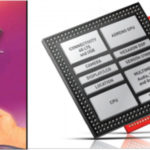
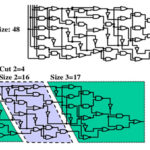

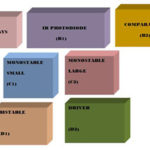
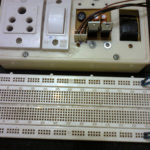

Questions related to this article?
👉Ask and discuss on EDAboard.com and Electro-Tech-Online.com forums.
Tell Us What You Think!!
You must be logged in to post a comment.